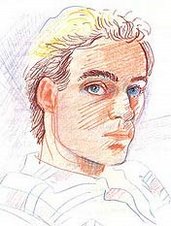 |
| Portrait of Oliver Cromwell, 1599-1658 Lord Protector of England |
The Interregnum, a period of republican rule in England, Scotland, and Ireland, lasted from 1649 to 1660. It began with the execution of King Charles I and ended with the restoration of the monarchy under Charles II.
Oliver Cromwell, a skilled military leader and devout Puritan, emerged as the dominant figure during this period. He led the New Model Army to victory in the English Civil War and played a key role in the execution of the king. In 1653, he was appointed Lord Protector, effectively becoming the ruler of England, Scotland, and Ireland.
Cromwell's rule was marked by a combination of religious tolerance and strict moral codes. He sought to reform society and establish a more just and equitable government. However, his regime was also authoritarian and often relied on military force to maintain order.
The Interregnum period was a time of significant social and political upheaval. It saw the rise of Puritanism, the suppression of the monarchy, and the establishment of a republican government. While Cromwell's rule brought stability and some prosperity to England, it was ultimately unsuccessful in creating a lasting and peaceful republic. His death in 1658 led to a period of instability, and the monarchy was restored in 1660.
 |
AI Generated Photo of Oliver Cromwell based a contemporary
painting of his portrait when he was alive. |
Key Phases of the Interregnum:
The Commonwealth (1649–1653):
- Following Charles I’s execution, England was declared a republic, abolishing the monarchy and the House of Lords.
- Power initially rested with the Rump Parliament and the Council of State.
- Cromwell, as a leading military and political figure, crushed uprisings in Ireland and Scotland, consolidating control over the British Isles.
The Protectorate (1653–1658):
- Cromwell became Lord Protector under the Instrument of Government, the first written constitution of England
Decline of the Protectorate:
Richard Cromwell’s Weak Leadership (1658–1659):
- After Oliver Cromwell's death in 1658, his son Richard Cromwell became Lord Protector.
- Lacking his father's military authority and political acumen, Richard struggled to manage tensions between the army and civilian government.
- In 1659, Richard was forced to resign, and the Rump Parliament was reinstated, leading to political chaos.
Factional Struggles:
- The army, now fragmented and dominant, controlled the government but lacked unity.
- Discontent grew among the populace, who were weary of military rule, high taxes, and instability.
Steps Toward the Restoration:
General George Monck’s Role:
- George Monck, a key military leader stationed in Scotland, marched his forces to London in early 1660.
- Monck negotiated with Parliament and called for the reinstatement of the Long Parliament, which then dissolved itself to allow for free elections.
Declaration of Breda (April 1660):
- Charles II, son of Charles I, issued the Declaration of Breda from exile in the Netherlands.
- He promised general amnesty for former enemies, respect for private property, freedom of conscience, and to work with Parliament.
- This conciliatory approach gained widespread support.
The Convention Parliament (May 1660):
- Newly elected, the Convention Parliament invited Charles II to return to England as king.
- On May 29, 1660, Charles entered London in triumph, marking the official Restoration of the Monarchy.
The Restoration:
- Charles II’s Coronation: Charles was crowned in 1661, restoring the monarchy, the Anglican Church, and the House of Lords.
- The Restoration sought to reconcile the divisions caused by the civil wars and the Interregnum, though underlying tensions between monarchy and Parliament persisted.
The Restoration is often seen as a return to stability after the experiment of republican rule, albeit one tempered by the lessons of Cromwell’s era.
Full disclosure: Gemini and Chat GPT helped me to create this blog post.







No comments:
Post a Comment